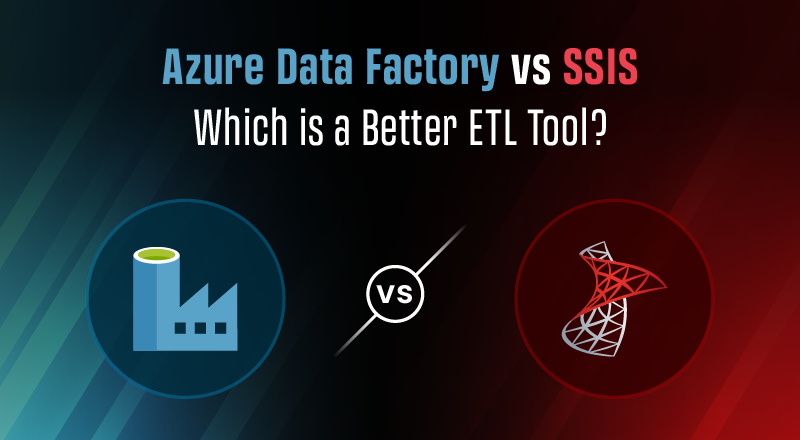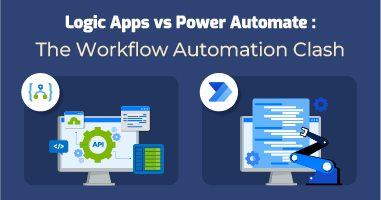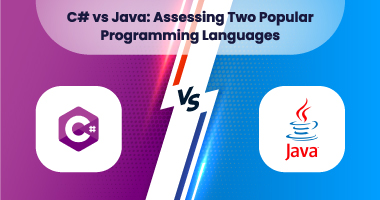Azure Data Factory vs SSIS: Which is a Better ETL Tool?
UpdatedSeptember 20th, 2024

As data integration and migration processes take place, selecting the apt ETL (Extract-Transform-Load) tool is vital. Involved professionals look for the tool that offers them optimal results. Two big names in the world of ETL are Azure Data Factory (ADF) and SQL Server Integration Services (SSIS).
These tools are created to read from disparate data sources and then write and transform data. Hence, both point towards a similar objective but have their specialties.
The below comparison between Azure Data Factory and SSIS is especially helpful for those having a tough time deciding on the ETL tool. The evaluation based on different parameters, advantages, and limitations illuminates each tool’s characteristics and situations in which it is a better performer.
First, let us review them individually, including their pros and cons.
What is Azure Data Factory?
Azure Data Factory is a famous data orchestration and ETL tool vital to Microsoft Azure development. It assists organizations in designing on-premises or cloud-driven solutions.
As a serverless technology, it empowers users to undergo enterprise-level data movements and transformations by transferring data through different layers. It assists in creating and scheduling pipelines that can collect data from disparate sources and then perform data transformation on big data.
Azure Data Factory has four main components:
- Pipeline for the jobs that are to be executed.
- Activity for all independent steps in a pipeline.
- Datasets representing databases/files/folders as input to the ETL process
- Linked Services is a connection string connecting data sources and services with authentication.
As a managed cloud-driven data integration service, it builds on the Reliable Services framework woven into the Microsoft Azure platform.
What is SSIS?
SSIS stands for SQL Server Integration Services, a popular platform for performing enterprise-level data transformation and integration jobs. It can be hosted on-premises in a self-managed virtual machine or deployed as part of ADF in a virtual machine that Microsoft manages. It is a tool that offers joins, aggregation, splits, etc.
As a flexible and fast data warehousing tool leveraged for ETL, it undergoes data migration activities that can quickly transfer and transform data from one source to another. The data sources it supports are Oracle, SQL, Excel files, DB2 databases, etc. Developers can build innovative solutions without creating a single line of code.
SSIS possesses four significant components:
- Control Flow that assists in arranging the order of components.
- Data Flow performs the ETL process to load onto another destination.
- Packages collect the control and data flow activities
- Parameters that simplify the task of passing runtime values to SSIS packages.
SSIS vs ADF: Pros and Cons
Pros of SSIS:
- Standardized ETL solutions for daily tasks
- Capability to manage and connect data from disparate sources
- User-friendly, easy to use, and learn for novices
- Good debugging facilities
- Simple Active Directory integration for SQL Server connect
- Create outbound data files and record them to FTP
- Continuous Integration and Continuous Deployment
- It is easy to take data from servers other than MS SQL Server or Oracle
- Offers self-service BI facilities
- Lookup and transformation functionalities
Cons of SSIS:
- Parallel execution of multiple packages
- Limited flat file or Excel connection
- Challenging to map destination with OLE DB command
See How We’ve Revolutionized Cloud-based SaaS Application Execution for a Global Design Company
Pros of ADF:
- Offers good support for exhaustive queries
- Serverless solution lessening meticulous tasks and maintenance
- Seamless integration with third-party connectors
- It is easy to create pipeline schedules and execute SSIS/SSMS packages
- Copies data from JSON, Azure database, API, Azure Synapse, etc.
- Usage of linked service in many pipelines
- Fast, convenient with multiple connectors
- Easy setup of security protocols for IP addresses
- Effective monitoring with fine-tuning, automation, and flexibility
- Access to multiple users from remote locations
Cons of ADF:
- Less flexible as compared to other ETL tools
- No debugging tools
- Limited source connectors
An Interesting Portfolio: Marketing Business Analytics Solution for Financial Company
Organizations Using Them
Companies Using ADF:
KPMG, EY, GEICO, Ryder System, Lenovo Group Ltd., Blue Cross Blue Shield Association and many more
Companies Using SSIS:
Humana, Wells Fargo, KPMG, CVS Health, Uline, Guidehouse, NetSuite Inc., Red Hat Inc., and many more
Azure Data Factory vs SSIS: The Differences
As you compare SSIS vs. Azure Data Factory, we observe that both are leading, scalable, accessible, secure, and robust data integration tools heavily influenced by graphical user interfaces.
Both are leveraged for ETL activities that consist of disparate sources and sinks. But specific characteristic differences set them apart and ease out the task of choosing the right one; here are they:
| Parameters |
Azure Data Factory (ADF) |
SSIS |
| Overview |
Azure’s cloud ETL service for scale-out serverless data integration and data transformation |
An on-premises tool for creating enterprise-level data integration and data transformation solutions |
| Azure Data Factory Vs. SSIS Performance |
It is swift in performance since it works with the cloud-based architecture. |
Very fast in performance, data transformation is done in memory buffers |
| Variety of Data |
Structured and unstructured data |
Structured data |
| Programming Languages |
ADF does not have a programming SDK – It uses PowerShell, Python, and .NET |
SSIS has a programming SDK that uses automation through C#, BIML, VB |
| Development Tools |
Web browser |
SQL Server development tools |
| Costing Structure |
Abides by the ‘pay as you go’ model |
It has free and paid licensed versions |
| Utilization |
ETL, ELT, data movement, orchestration, Reverse ETL, streaming |
ETL, ELT, data integration, data transformation, Reverse ETL |
| Database Replication |
Full and incremental load |
Full and incremental load |
| Addition of New Data Sources |
Offers SDK for creating custom connectors |
By coding custom data source elements |
| Data Connectors |
Over 90+ inbuilt data connectors for data integration |
Various data connectors are compatible with .NET, ADO, ODBC, OLEDB, etc. |
| Developer Tools |
Azure Portal, CLI, PowerShell, Visual Studio |
Visual Studio, SQL Server Management Studio |
| Purchase Details |
Self-service purchase via Azure portal or Microsoft sales team |
Bundled along with Microsoft SQL Server |
| Version Control |
It can be integrated into Azure DevOps git or GitHub and supports branching, merging, etc. |
It can be integrated with TFS and Git, supporting team-based development with merging and branching. |
| Velocity of Data |
Streaming, real-time, and batch |
Batch |
| Data Flows |
It uses Apache Spark with optimization features, which makes it suited for more extensive data sets. |
Best suited for small to medium data sets because the startup time is more than the runtime |
| Learning Curve |
It is still evolving; hence, it needs time to master |
Since it has been around for a while, it is easy to learn |
| Support for Triggers |
ADF supports scheduled batch, event-based, and tumbling window triggers |
SSIS supports batch triggers only but can help in developing custom triggers for data streams |
| Data Integration |
It integrates with various cloud-based tools and other data sources like Azure Data Lake Store. |
Integrates with a range of connectors, though they may not be cloud-based |
| User Interface |
An effective graphical user interface for designing workflows executable in the cloud or on-premises |
Graphical interface with drag-and-drop components for the creation of pipelines |
| Architecture |
Hosted entirely in the cloud, networks are stateless |
On-premises tool that executes in the data center |
On a Concluding Note
As we go through the detailed comparison of Azure Data Factory vs. SSIS, we feel that both are competent enterprise ETL tools and can be implemented as organizations need. Confident helping tips can aid in decision-making:
You can choose SSIS when
- The work area is on-premises
- Users already possess SQL Server 2016 or later
- ETL processes are to be executed continually
- You have Visual Studio and Windows development machines
You can choose ADF when
- You want to select the ‘pay as you use’ model
- Most of your activities are in the cloud
- Activities are spread in different time zones
- You use an operating system like iOS other than Windows
Specific parameters can help you decide which to select when assessing SSIS vs ADF. They could be cloud infrastructure, data size, budget estimates, project deadlines, availability of skilled resources, and infrastructure.
With SPEC INDIA’s Microsoft Azure cloud services, you can modernize your applications to Azure cloud and enjoy the benefits of reduced cost, better performance, robust security, and the ability to respond to changes faster.
We have a proficient team of Microsoft Azure developers with years of experience and skills in developing and implementing Microsoft Azure cloud solutions that cater to your business needs.
Our developers are experts in leveraging Azure’s potential by building cloud-native apps, migrating existing solutions to Azure, launching new product solutions, and providing round-the-clock support and maintenance.
SPEC INDIA is your trusted partner for AI-driven software solutions, with proven expertise in digital transformation and innovative technology services. We deliver secure, reliable, and high-quality IT solutions to clients worldwide. As an ISO/IEC 27001:2022 certified company, we follow the highest standards for data security and quality. Our team applies proven project management methods, flexible engagement models, and modern infrastructure to deliver outstanding results. With skilled professionals and years of experience, we turn ideas into impactful solutions that drive business growth.





